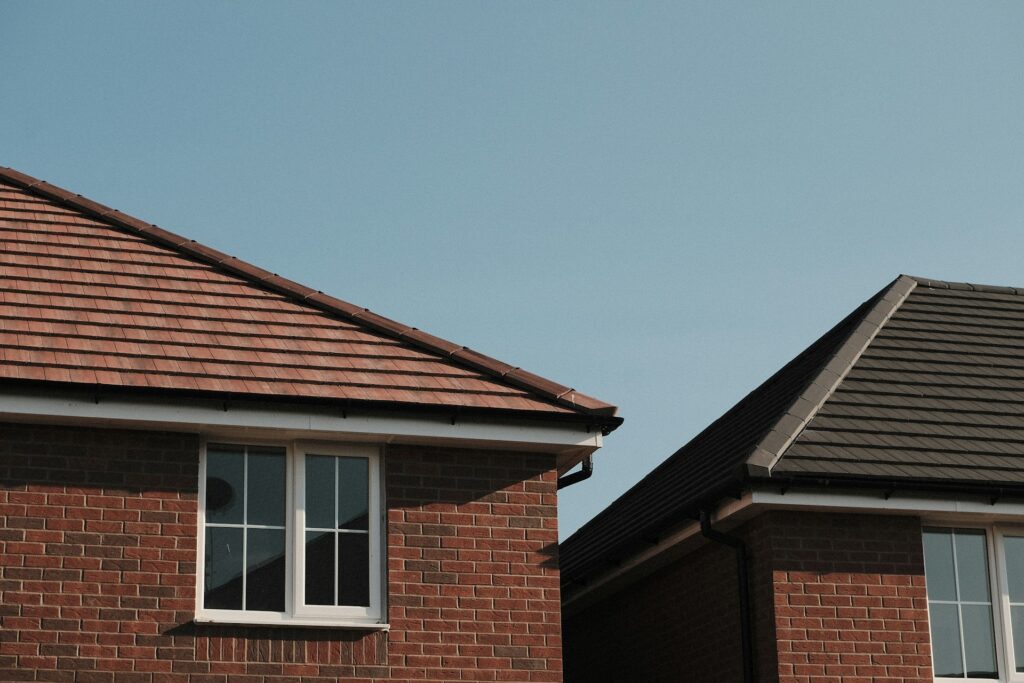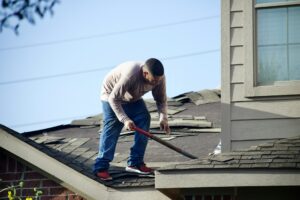Protecting your home from the elements takes on special importance when you live in Florida, where year-round tropical weather meets the looming threat of hurricane season. Tampa’s coastal terrain, combined with the region’s high heat and humidity, creates a unique testing ground for any roof. Ensuring your new roof installation can withstand hurricane-force winds and extreme conditions is vital for safeguarding your home investment.
Planning a new roof installation in Tampa involves identifying which roofing materials offer superior hurricane resistance, how different materials fare against local climate extremes, and the right strategies for maintenance that keep your roof prepared for sudden weather shifts. As you read on, you’ll learn about Tampa’s climate challenges, the importance of Florida’s building codes, and the standout materials known for their durability. You’ll also discover how HOMEMASTERS can help ensure your new roof is a solid addition to your home’s resilience.
Florida’s Climate and the Hurricane Factor
Florida’s reputation for sunshine can sometimes disguise the dynamic range of climate conditions that residents face. Tampa in particular experiences high humidity, frequent rainfall, and, for much of the year, regular storms. This sets the stage for accelerating normal wear and tear on any roof. Over time, excess moisture can seep into sublayers, leading to issues like mold and water damage.
When hurricane season descends, these conditions intensify dramatically. The powerful winds of a hurricane can lift shingles or tiles, driving rain horizontally under vulnerable roof seams. Intense gusts not only funnel water through any weak spot but may also push debris that can crack or damage roofing materials. Securing a roof that’s thoroughly tested and proven against high-wind events and water intrusion is crucial for protecting structural integrity.
Many popular roofing materials are engineered to manage typical inclement weather, but Florida’s high-speed wind zones shift the conversation from standard durability to advanced hurricane resistance. After all, a typical storm can pause in intensity; a hurricane has the potential to remain ferocious over an extended period, severely testing a roof’s wind resistance and structural design. For Tampa homeowners who still rely on older or suboptimal materials, investing in a new, hurricane-resistant roof is an important priority.
Understanding Roofing Codes and Regulations
Florida’s building codes are among the strictest in the nation, driven largely by repeated hurricane impacts and the need to mitigate widespread damage in vulnerable areas. Tampa is classified within a high-wind zone that demands rigorous construction standards. These regulations ensure that newly installed roofs meet minimum wind-load requirements and provide robust waterproofing methods attuned to the local environment.
In Tampa, key guidelines focus on details like: – Wind uplift standards, specifying how well roofing materials and fasteners must withstand powerful gusts.
- Installation methods, ensuring that nails, adhesives, and structural components collectively form an unbroken defensive barrier.
- Mandatory product testing and certification, verifying that roofing systems can withstand local wind and weather extremes.
These standards reflect decades of research and cumulative experience with hurricane-related damage. When selecting hurricane-resistant roofing materials, verifying their compliance with local building codes means you’re already on a path to heightened stability. It also ensures a smoother process when it comes to documentation and insurance. Many insurance companies reward homeowners who invest in hurricane-proofing their homes, often granting reduced premiums or policy benefits.
Key Hurricane-Resistant Roofing Materials
Choosing the right material for your new roof installation in Tampa can significantly reduce the risk of storm-related damage. Although several types of roofing exist, four primary materials have proven track records for weathering tough Florida conditions. Each option offers unique strengths, costs, and aesthetic possibilities.
Asphalt Shingles
Asphalt shingles are often the first material that springs to mind for residential roofing. For Florida homeowners, a specialized variant, wind-resistant or architectural shingles, can provide an economic yet robust solution. These heavier shingles feature reinforced fiberglass mats that enhance wind resistance and structural stability.
- Cost-effective and widely available.
- Easier installation and maintenance, leading to reduced labor costs.
- Available in a variety of designs, including layered styles that add visual depth.
While high-quality asphalt shingles are engineered to withstand winds of up to 130 mph or more, regular inspections remain critical to address potential damage from repeated storms. Without consistent monitoring and quick repairs, small cracks or missing shingles can let water creep into the deck.
Metal Roofing
Metal roofing has gained popularity for its sleek profiles and outstanding resilience against weather extremes. Standing seam metal roofs, in particular, are lauded for their low-maintenance design and impressive wind resistance. Constructed of aluminum or steel, metal roofs can often hold up against gusts exceeding 140 mph. Tampa residents who choose metal roofing cite its exceptional durability, making it a sensible long-term investment.
- Excellent wind-uplift ratings, with fewer vulnerable seams.
- Reflective surfaces that improve energy efficiency by repelling heat.
- Potentially longer lifespan, metal roofs can last 40–70 years with proper care.
Despite a higher up-front cost, many homeowners find the payoff in durability, reduced insurance premiums, and lower cooling expenses worth the investment. Metal roofing also stands out for its sustainability; it typically contains a high percentage of recycled materials and can often be recycled again at the end of its lifespan.
Clay and Concrete Tiles
Clay and concrete tiles represent a classic roofing choice, frequently seen on Mediterranean or Spanish-style homes. Attractive and well-suited to Florida’s sunny climate, they also offer impressive hurricane resistance when installed correctly. Although these tiles may seem fragile, each piece undergoes testing for wind speeds of up to 150 mph or more, meaning a properly secured tile system can serve as a formidable weather barrier.
- Robust wind and water resistance, especially with improved fastening systems.
- Energy efficiency from the natural air gaps beneath tiles that reduce heat transfer.
- Significant lifespan, some well-maintained tile roofs survive half a century or longer.
Nevertheless, clay and concrete tiles can be heavier than other materials, requiring careful structural evaluation before installation. This extra weight means any underlying structural weaknesses must be addressed to ensure full safety and performance in storm scenarios. Regular tile inspections are also vital because if a tile cracks or shifts, water infiltration can quietly creep beneath the underlayment.
Synthetic or Composite Roofing
Recent advancements in roofing technology have produced synthetic materials that blend polymers for enhanced durability and realism. Composite shingles mimic the look of natural slate or shake while delivering long-lasting weather protection. They’re often lighter than clay or concrete but still robust enough to handle hurricane-level wind speeds.
- Resilience against heavy impact, such as hail and debris.
- UV and moisture-resistant coatings that manage Tampa’s approximate 240 days of sunshine a year.
- Relatively lower weight, which reduces strain on roof decks and framing.
Homeowners can enjoy the aesthetic variety of synthetic roofing, from classic cedar shake styles to slate-like textures. This versatility offers a tailored look without compromising on the necessary wind resistance to combat severe storms.
Essential Factors for Tampa Roof Installation
Selecting hurricane-resistant materials is one piece of the puzzle. Proper installation and ongoing maintenance form the bedrock for ensuring your roof’s longevity, especially in Tampa’s harsh environment. Even the best materials can falter if essential installation methods and follow-up routines aren’t consistently upheld.
Proper Underlayment
An underlayment serves as an additional moisture barrier between the roof deck and primary roofing material. In hurricane-prone areas, a peel-and-stick underlayment with self-sealing properties can be a game changer. When high winds drive rain horizontally under shingles or tiles, a sealed underlayment helps block water intrusion.
Given Tampa’s year-round rainfall, dryness and bond adhesion can be tricky to achieve if installers rush. It’s crucial that roofing professionals apply the underlayment carefully, waiting for stable weather conditions. This further safeguards your roof’s base from the constant moisture in the Florida atmosphere.
Ventilation
Ventilation is essential in preventing hot, moist air from accumulating below your roof deck. Too often, homeowners overlook this while focusing exclusively on a roof’s topmost layers. Without proper airflow, your attic can reach extreme temperatures, which affects roofing materials by weakening adhesives and promoting mold growth.
In hurricane-prone areas, balanced ventilation stabilizes internal pressure, reducing stress on the roof. Soffit and ridge vents allow the hot air to escape naturally, lowering your home’s cooling costs and extending the roof’s life span. When done correctly, ventilation also means less trapped humidity, minimizing the risk of condensation-related structural damage.
Sealants and Flashing
High-quality sealants and flashing systems around roof penetrations, such as chimneys, skylights, and vents, reinforce weak points that could otherwise compromise even premium roofing materials. In hurricane conditions, the rush of driving rain and wind tests every edge and corner, and improperly sealed gaps can morph into significant leaks in a matter of hours.
Strategic flashing ensures water is redirected away from vulnerable seams, maintaining a cohesive weather shield. In an area known for tropical storms, investing in advanced flashing products, such as metal step flashing or specialized synthetic flashing tapes, provides additional security. Although it may add cost, the difference in performance during a major weather event can be extraordinary.
Maintenance Routines
Routine inspections and proactive maintenance help you stay ahead of potential leaks and compromises. Checking your roof’s surface, flashing, fasteners, and gutters is essential in a climate where heavy rains, wind-blown debris, and near-constant humidity work together to degrade materials over time.
Take advantage of professional inspections at least annually, or after a significant storm. A trained eye can detect hairline cracks, missing fasteners, or subtle shifts in tiles or shingles that might go unnoticed. Swift repair and cleanup ensure your roof is always on “standby,” ready for the next possible weather front. It’s about small, preventative steps that avert costly issues later on.
HOMEMASTERS Expertise in Hurricane-Resistant Roofing
A successful new roof installation in Tampa hinges on both product quality and expert installation. At HOMEMASTERS, experienced roofing professionals combine a deep knowledge of local building codes with specialized training in advanced roofing systems. This ensures that your roof isn’t just up to code but prepped for real-life stress tests Florida’s climate delivers year after year.
Many roofing companies offer “one-size-fits-all” solutions, but HOMEMASTERS focuses on a tailored approach. Our specialists assess each structure’s unique needs, analyzing factors like attic ventilation, load-bearing capacity, and historical storm impacts in your neighborhood. We then recommend materials that align with your budget, desired longevity, and architectural style.
Moreover, working with an experienced Tampa roofing team means smoother communication with county inspectors, streamlined permitting processes, and consistent adherence to Florida’s strict quality controls. HOMEMASTERS’ priority is to provide you a roof that stands the test of time, offering peace of mind in the face of Florida’s unpredictable weather patterns.
Real-World Example A Tampa Bay Homeowner’s Success Story
Consider a fictional, but entirely plausible, scenario to illustrate why material selection, installation quality, and maintenance are so vital. A couple in Tampa Bay, newly arrived from the Midwest, purchased a home with an older roof that had minor visible wear. At first, they postponed a new roof installation, believing the roofing looked “good enough.”
After experiencing their first Florida summer, the couple watched local thunderstorms test the old shingles. During one particularly fierce storm, water leaks emerged, and a roof inspection revealed fastener failures along with significant underlayment damage. Uncertain where to turn, they contacted HOMEMASTERS for a professional assessment.
Their eventual choice was a metal roofing system with specialized flashing around roof penetrations. The installation went smoothly, and the couple agreed to schedule annual inspections. Months later, a tropical storm pummeled the Tampa Bay area. This time, the couple was pleased to find no leaks or damage. Not only did their new roof protect the home from intense wind and rain, but monthly utility costs also dropped due to metal’s reflective properties and improved ventilation. Their story highlights the value of upgrading to hurricane-resistant materials promptly and underscores the importance of partnering with local roofing specialists.
Roofs Built to Defend and Endure
Although Tampa offers a sunny, vibrant place to live, it also tests homeowners with its extreme weather patterns. Elevating your home’s safety through a robust, hurricane-resistant roof is an investment that pays dividends in peace of mind, potential insurance savings, and overall property value. Choosing high-quality roofing materials, whether asphalt shingles, metal, tile, or synthetic, represents a critical first step, but success ultimately hinges on proper installation, thorough inspections, and continuous upkeep.
HOMEMASTERS helps Tampa homeowners apply tested and proven solutions, reflecting deep expertise in local codes, advanced materials, and long-term performance. Knowing your roof can cope with gale-force winds, tropical rain, and relentless sunshine assures you’ve selected a truly enduring asset for your home. By focusing on consistent maintenance, you position your roof to last through unexpected storms, adapting gracefully to the breathtaking, sometimes volatile, climate that defines life along Florida’s Gulf Coast.
A new roof shouldn’t just be a transaction but a transformation, unifying comfort, energy efficiency, and structural security. With the right preparation, you can enjoy Tampa’s warm climate and coastal charms without the fear of storm damage undermining your most important investment. When the next hurricane watch arrives, your peace of mind will reflect a roof built to defend and endure.




